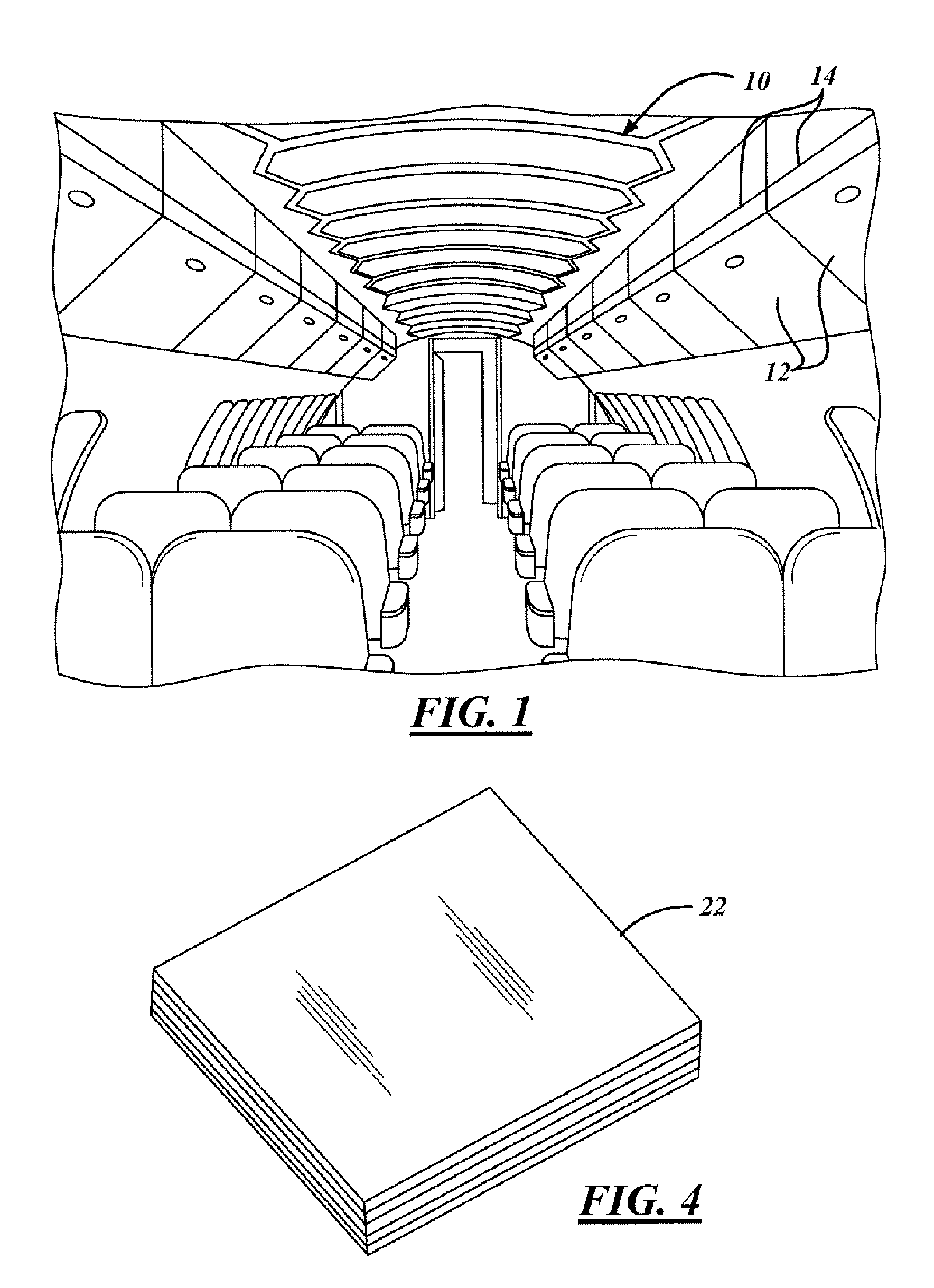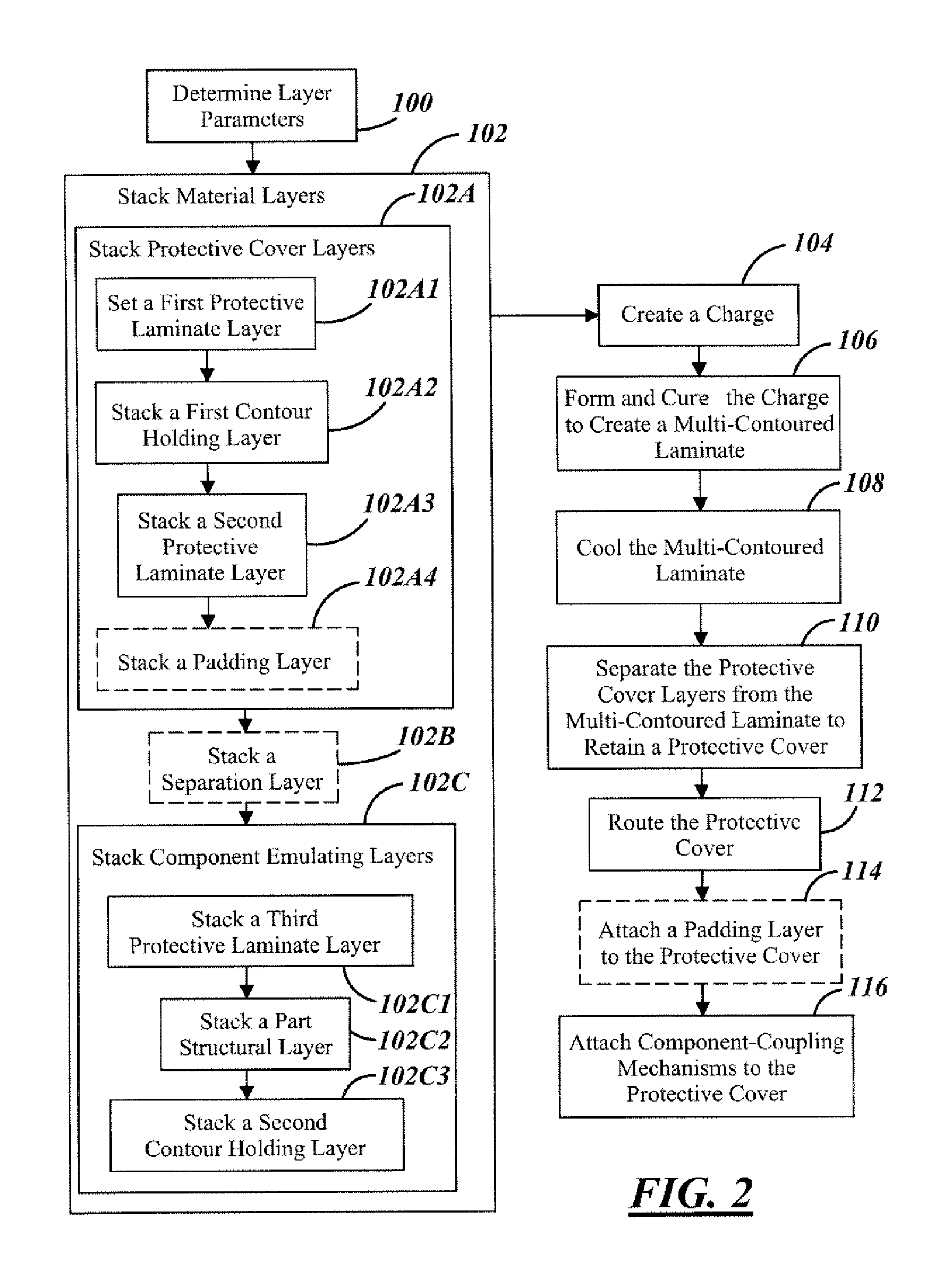Protective cover and tool splash for vehicle components
a technology for vehicle components and protective covers, applied in the field of vehicle components, can solve the problems of time-consuming and cost-abortive repair or replacement of damaged components, additional associated costs in relation to removal and reapplication of protective covers, and achieve the effects of reducing or eliminating costs, reducing labor intensity and increasing durability
- Summary
- Abstract
- Description
- Claims
- Application Information
AI Technical Summary
Benefits of technology
Problems solved by technology
Method used
Image
Examples
Embodiment Construction
[0031]In the following Figures the same reference numerals will be used to refer to the same components. While the present invention is described primarily with respect to protective covers, splashes, and down stream parts, structures, and molds for various aircraft applications, the present invention may be applied in aeronautical applications, nautical applications, railway applications, automotive vehicle applications, and commercial and residential applications. The present invention may, for example, be applied to any part that requires matched mold dies for crushing composite parts. Also, a variety of other embodiments are contemplated having different combinations of the below described features of the present invention, having features other than those described herein, or even lacking one or more of those features. As such, it is understood that the invention can be carried out in various other suitable modes.
[0032]In the following description, various operating parameters ...
PUM
| Property | Measurement | Unit |
|---|---|---|
| stiffness | aaaaa | aaaaa |
| temperature | aaaaa | aaaaa |
| temperature | aaaaa | aaaaa |
Abstract
Description
Claims
Application Information
 Login to View More
Login to View More - R&D
- Intellectual Property
- Life Sciences
- Materials
- Tech Scout
- Unparalleled Data Quality
- Higher Quality Content
- 60% Fewer Hallucinations
Browse by: Latest US Patents, China's latest patents, Technical Efficacy Thesaurus, Application Domain, Technology Topic, Popular Technical Reports.
© 2025 PatSnap. All rights reserved.Legal|Privacy policy|Modern Slavery Act Transparency Statement|Sitemap|About US| Contact US: help@patsnap.com



